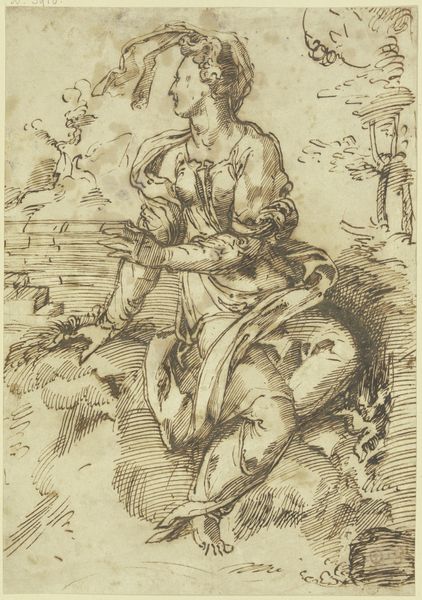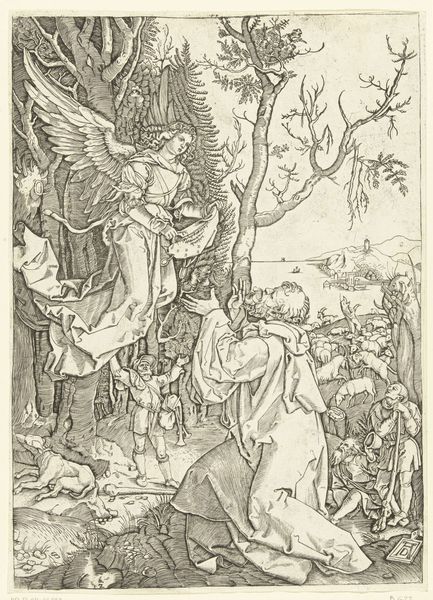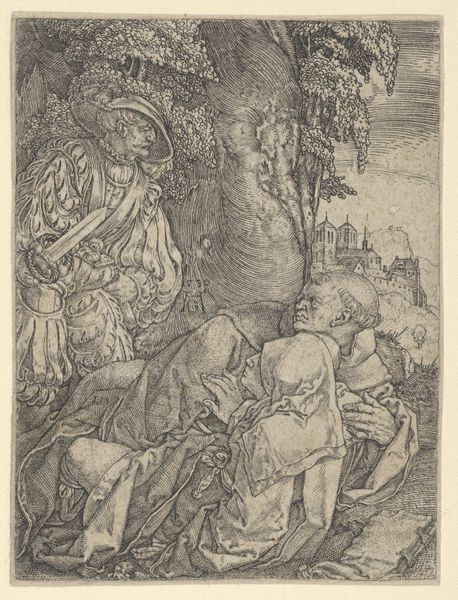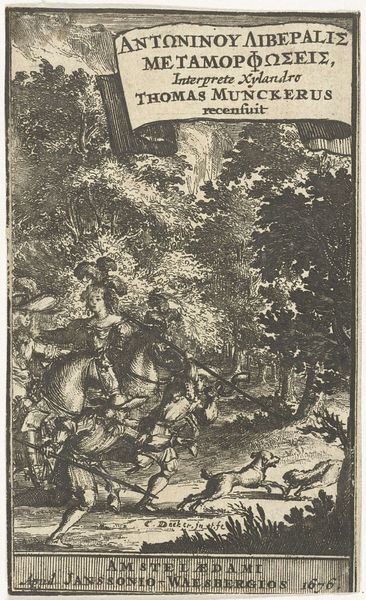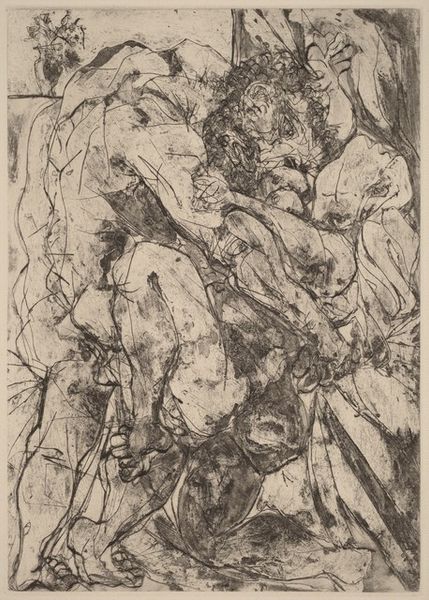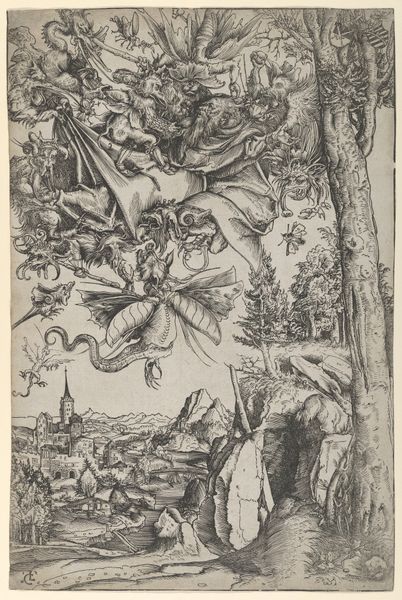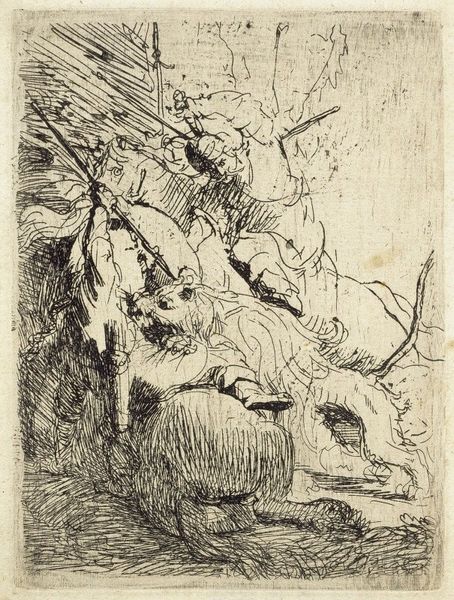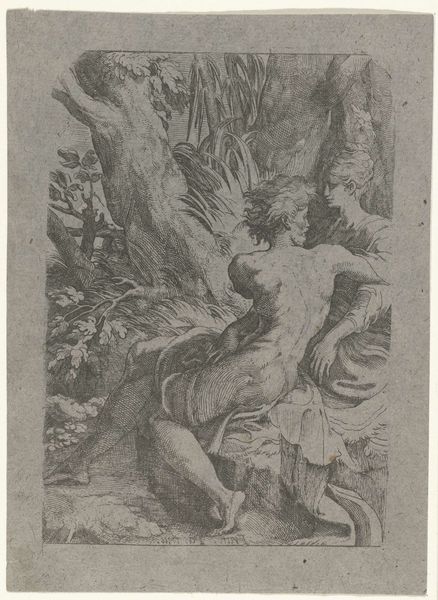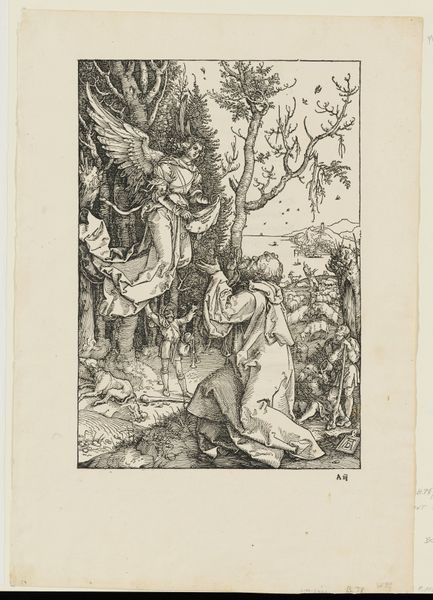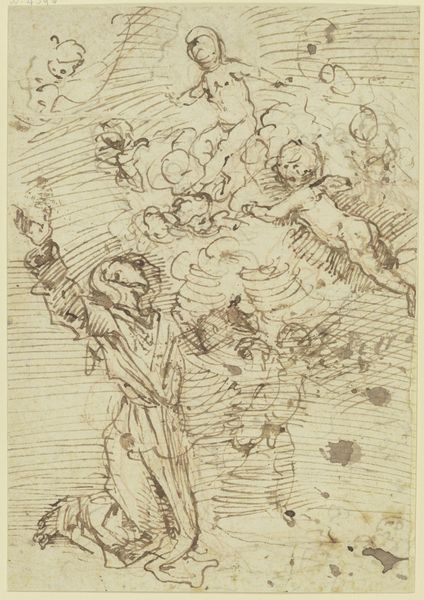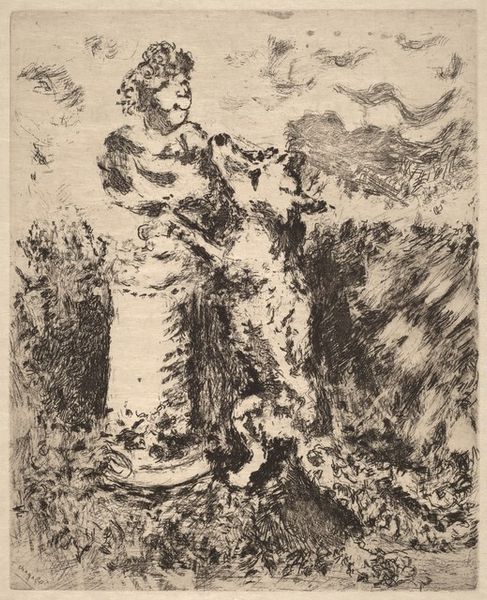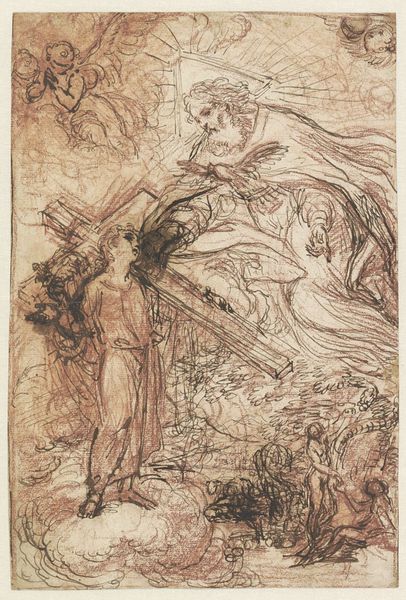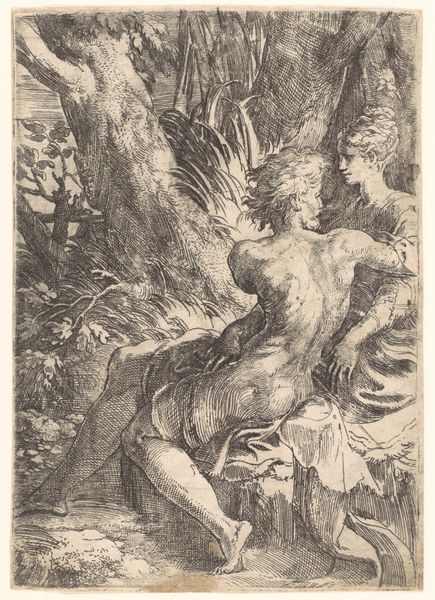
print, etching
#
portrait
#
narrative-art
# print
#
etching
#
landscape
#
figuration
Dimensions: Image: 303 x 213 mm Sheet: 374 x 326 mm
Copyright: National Gallery of Art: CC0 1.0
Curator: What a remarkable print! This etching is entitled "Spring Beau" created in 1950 by Ann Didyk. Editor: It has a somber feel to be honest. The monochrome tones and textured lines create a kind of wistful mood, like a memory fading at the edges. Curator: I see what you mean. It certainly has layers of meaning embedded in the imagery. For me, the figure almost seems like an allegorical personification of spring. Notice the bouquet and his attire – a kind of gentlemanly figure transposed onto this delicate landscape. The symbolism speaks to a regeneration of the natural and social world, if you will. Editor: I’m drawn more to the context of postwar America. It has this sort of 'everyman' figure set against this hazy idyllic background. In that way, I read it as commentary of a society reckoning with social and economic shifts of that period, longing for stability, even an imagined agrarian past. Didyk's work appears to play into popular representations that bolstered that sensibility. Curator: That's a perceptive reading! And it raises an interesting point about the dual function of images – to comfort but also to challenge. For example, the landscape background. See how its architectural details juxtapose a sense of established structure alongside the instability of spring showers, suggesting a culture searching for sure footing. It's not simply decorative or nostalgic; rather, it reflects society in the mid-20th century, both embracing progress and lamenting the cost. Editor: Precisely. It is so interesting to think about who sees it and what they would get from the message being displayed so directly, in such a small scale. The scale allows for many different placements and purposes. I really enjoy looking at that interplay, with those factors in mind. Curator: I agree. I'm now rethinking my allegorical assumptions – I think it speaks to a broader tension between the personal and the socio-historical, where identity is continuously being negotiated and the art of etching preserves moments, not just people. Editor: Thanks, that reframes this entirely.
Comments
No comments
Be the first to comment and join the conversation on the ultimate creative platform.
